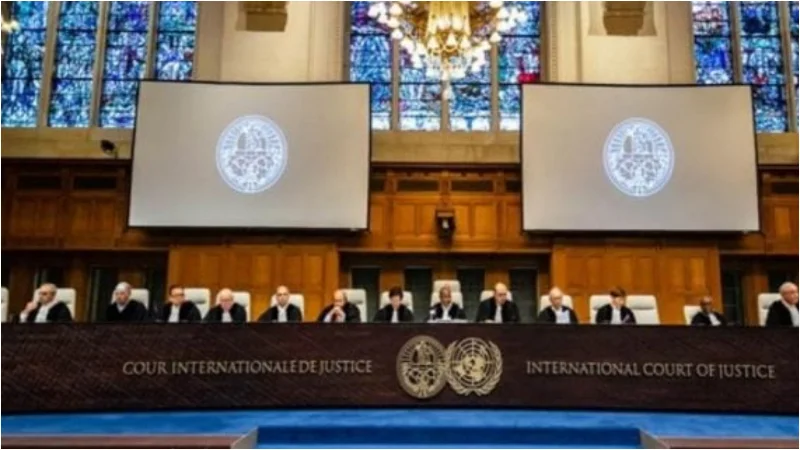It has been revealed that Vladimir Putin sent’several’ submarines into the North Atlantic hours after putting his nuclear forces on’special’ alert over its invasion of Ukraine.
The British navy believes Russia’s decision to move the submarines, each capable of carrying 16 ballistic missiles, was an act of ‘posturing’ rather than a direct threat.
Despite their return to Russia shortly afterwards, Western intelligence agencies have maintained constant surveillance of the Kremlin’s nuclear arsenal, which is thought to be the world’s largest at 4,477 warheads.
The Pentagon’s spokesman, John Kirby, said he has not seen any indication that Russia is preparing to use the weapons, but that has done little to reassure nervous world leaders, particularly in the West, after Putin used a fire-and-brimstone speech to declare war on Ukraine to make a thinly-veiled nuclear threat.
Analysts believe Russia’s use of the submarines’ nuclear weapons is ‘unthinkable,’ but some believe the use of shorter-range ‘tactical’ missiles – designed to destroy specific targets rather than entire cities – is possible.
‘Most Russian conventional weapons can be retrofitted with a low-yield nuclear capability.’ It’s more complicated than “plug and play,” but the Russians are quite inventive in what they put in front of bombs and missiles, according to a navy source.
Western officials pointed to Putin’s initial remarks when he sent forces into Ukraine, saying he wanted to liberate the country rather than destroy it, as proof that he did not intend to use nuclear weapons.
However, one official told The Times that the use of tactical nuclear weapons “was seen as an option that will be used below a strategic nuclear threshold,” but that there is “nothing to suggest” that this is likely at the moment.
An expert on Russia’s nuclear forces also claimed that weapons fired from aircraft or from land are not currently on Russian launchers and are instead stored in bunkers, usually a few kilometres away from airfields.
The Kremlin refused to rule out the use of nuclear weapons in Ukraine earlier this week.
Putin’s spokesman, Dmitry Peskov, was asked three times on CNN whether he could definitively rule out the possibility of the Russian leader pressing the button – and each time he refused to give a straight answer.
Instead, Peskov stated only that Russian doctrine allows Putin to use nuclear weapons to counter ‘existential threats,’ raising concerns that he could justify using the weapons over Ukraine, despite previously declaring that the country poses a direct threat to Russia’s security.
On February 24, Putin ordered the start of his’special military operation,’ warning anyone ‘who might be tempted to meddle in the ongoing events: whoever tries to stand in our way or create threats for our country.’
‘People should know that Russia’s response will be immediate and will lead you to consequences you have never experienced in your history,’ he said.
Just three days later, on February 27, Putin ordered his nuclear forces to be placed on’special alert,’ citing the NATO alliance’s ‘aggressive statements,’ specifically threatening the West.
Western leaders and intelligence agencies have recently warned that as the war in Ukraine continues, Putin may resort to desperate measures.
On Sunday, Joe Biden reiterated his warning that the Kremlin appears to be working on a pretext to use biological or chemical weapons by falsely accusing Ukraine of possessing them, claiming that Putin’s “back is against the wall.”
Since 1987, the Bulletin of Atomic Scientists has published an account of the world’s nuclear arsenals compiled by leading experts from the Federation of American Scientists. Last month, the Bulletin of Atomic Scientists updated its records on Russia’s nuclear arsenal.
It stated that the stockpile consists of approximately 4,477 warheads, of which approximately 1,588 are strategic warheads capable of being deployed on ballistic missiles and heavy bomber bases.
The Bulletin also stated that an estimated 977 strategic warheads and 1,912 nonstrategic warheads are held in reserve.
According to the Federation of American Scientists, the United Kingdom currently has a stockpile of approximately 225 nuclear warheads.
According to the report, the United States has 5,428, France has 290, Pakistan has 165, China has 350, India has 160, Israel has 90, and North Korea has 20.
Russia’s war in Ukraine, which was supposed to be a days-long military mission to decapitate the government and bring the country back under Moscow’s control, is now in its second month, with massive casualties on both sides.
Earlier today, Russia claimed that 1,351 of its troops were killed fighting in Ukraine, a fraction of the 16,000 killed by Kiev.
The death toll has nearly tripled from the 498 reported in the previous update on March 2, with Moscow also admitting 3,825 soldiers have been injured today. This figure is more than double the previous figure of 1,597.
It is a stunning admission for the Kremlin, which has insisted to the Russian people that its “special military operation in the Donbas” is going exactly as planned.
However, this figure is most likely only a fraction of the true toll. Ukraine claims 16,000 troops have been killed, NATO claims 7,000 to 15,000 have died, and the US estimates 7,000 – though that figure is now a week old.
Ukraine does not provide a number of injured, but based on historical averages, their casualty toll could be as high as 48,000 people. NATO estimates that up to 25,000 people have been injured, while the US estimates that up to 21,000 people have been injured.
The update was issued by Moscow’s defence ministry as Russia’s invasion continued to falter, with Ukrainians counter-attacking near Kyiv, in the south, and in the north-east. However, the situation in Mariupol, the heavily fortified city on the Sea of Azov, appeared bleak, with Chechen special forces claiming to have taken control of the town hall.
Russian shelling also struck Kharkiv, in the north-east, in the early hours, killing at least four people and injuring three others as they waited in line for assistance at a humanitarian aid centre.




















